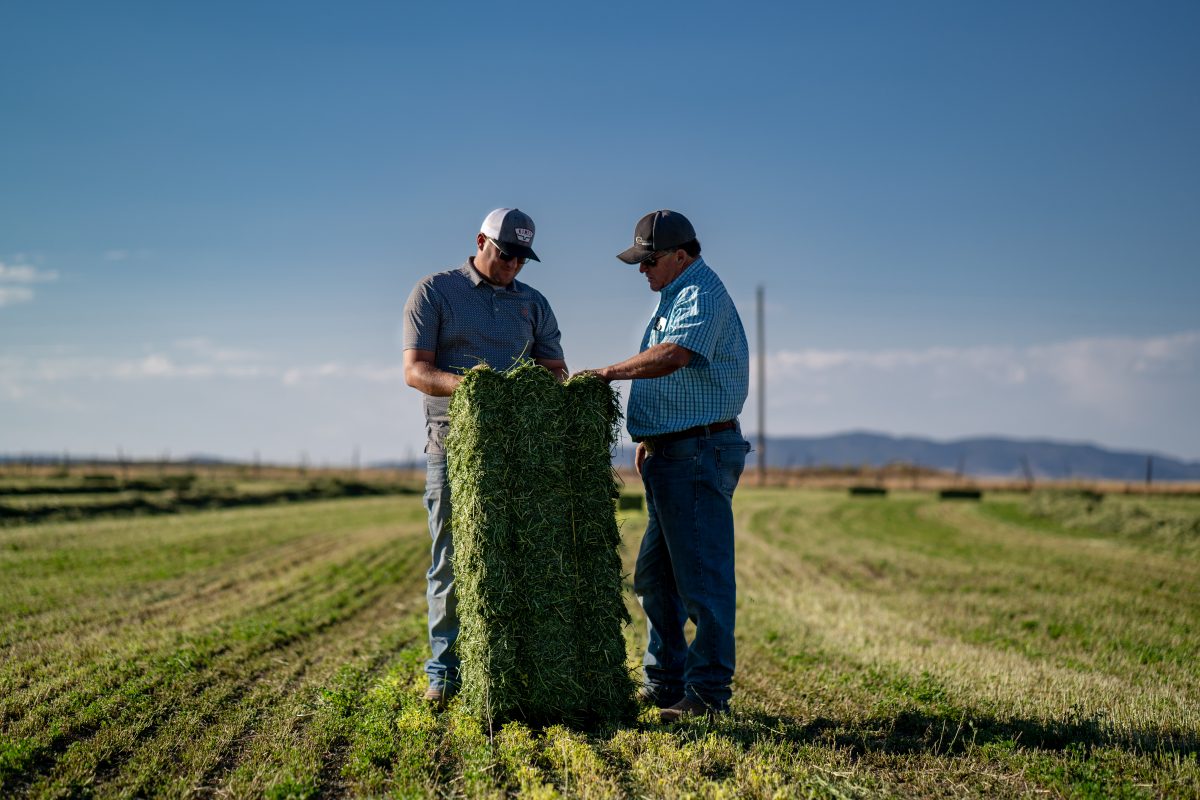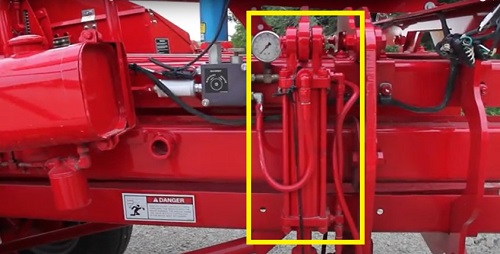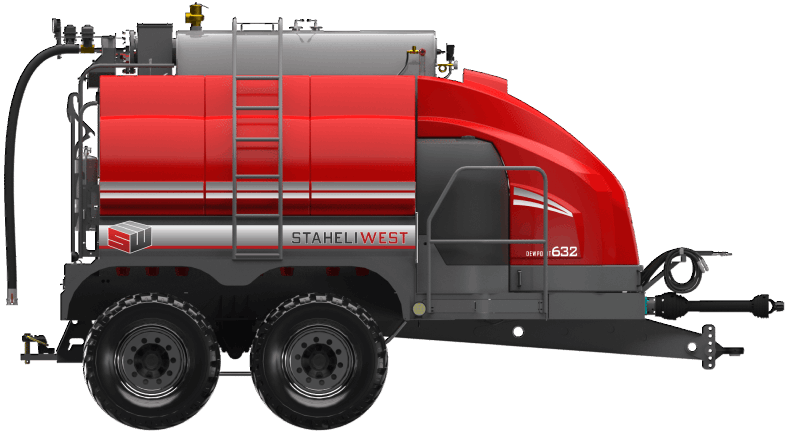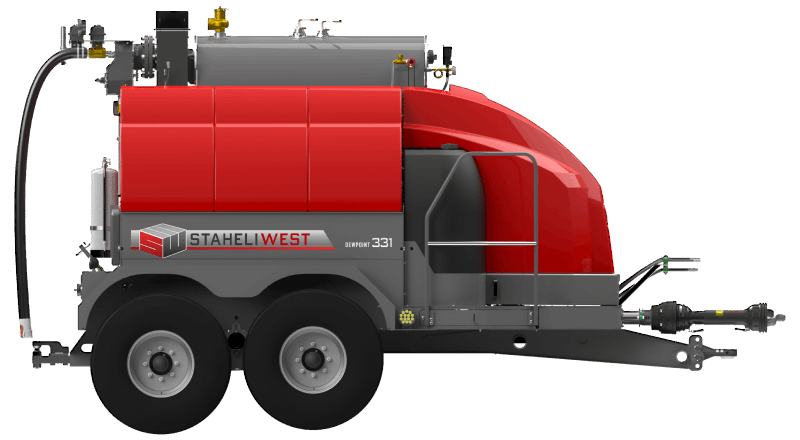
Maintaining Proper Bale Weight While Using the DewPoint 331
Will My Small Square Bales be Too Heavy with Steam?
Since releasing the DewPoint 6110 over 10 years ago, one of the most consistent and biggest benefits customers have experienced is increased bale weight. The bale weight increases in large square bales happen because of a major reduction in leaf loss and better bale compaction. For most customers, this factor alone has significantly contributed to the steamer’s fast ROI. However, even though increasing bale weights in large square bales is a big benefit, a higher bale weight in small square bales intended for the equestrian or retail market can be a negative thing. In this blog, we will discuss how to hit your target bale weight while baling with steam.
The Right Bale Weight is Critical
Typically, growers who are supplying the equestrian/retail markets want to make their bales within a couple of pounds on either side of a specific target weight that meets the demands of their customers. For example, an operation making 3-string bales might choose a target weight of 80, 90, or 100 lbs. Those who are making 2-string bales might choose a target weight of 50, 60, 70, or even 80 lbs., depending on the way they package and handle these bales with various bale bundling machines or bale wagons.
Anyone who makes these small square bales of any size understands that every pound of hay that is higher than the chosen “target weight” is a pound of lost income. You also know the particular desires of these retail and/or equestrian markets and how the market demands vary widely by regional traditions and demographics.
It is interesting how much “visual perception” plays into the emotion of how retail buyers purchase small square bales. For instance, if an 80 lb. 3-string bale is sitting next to an 80 lb. 2-string bale of equal quality, nearly all of us would choose the 3-string bale first because it is larger and appears to have more hay in it. It seems to be a better value. For other buyers who are not so concerned about “value”, a much smaller and lighter 2-string bale fits their needs for ease of handling, and even though the cost per ton might be significantly higher, they will pay more for the convenience. Growers know their markets well and simply want to make as consistent a bale package as possible within the parameters of what they know their markets want.
Using the DewPoint steamer may require some adjustments, but in the end, it can help you achieve an increased level of consistency in appearance, leaf pattern, and bale weight.
Massey Ferguson 1844 and 1843 3-String Balers
Massey Ferguson 3-string balers were originally designed with the capacity to make a heavy bale. When baling with steam, bales tend to be even heavier at similar bale chamber pressures. Adjustments to the chamber pressure, steam rate, and flake count will affect bale weights. Let’s discuss each of these in more detail:
- Bale Chamber Pressure: Dialing in the bale chamber pressure is critical in hitting the right bale weight. Staheli West Parts & Service offers a bale chamber pressure sensor kit that gives the operator a digital reading on the DewPoint 331 screen of what the bale chamber pressure is. It is easier to dial in bale pressure with a digital reading than with the manual gauge. With steam, the correct bale chamber pressure setting will likely be about ½ of what you’re used to. For example, on a Massey Ferguson 1844, you would shoot for around 150 psi instead of 300 psi. Of course, the operator will monitor bale weights and choose the appropriate hydraulic bale chamber pressure for the conditions he is working in to maintain the target bale weight. Sometimes it can be a bit more touchy to control bale weights when working in these lower hydraulic bale chamber pressure ranges as even small adjustments in the hydraulic pressures can make big differences in bale weights. To address this we are providing an effective option as you will read below.
- Reduced Size Hydraulic Ram Kit: With the stock hydraulic rams on Massey Ferguson 1844 and 1843 3-tie balers, it can sometimes be a bit more touchy to control bale weights when working in lower hydraulic bale chamber pressure ranges as even small adjustments in the hydraulic pressures can make big differences in bale weights. Staheli West Parts & Service offers a Reduced Size Hydraulic Ram Kit for these balers for all customers using the DewPoint 331. Smaller hydraulic rams actually raise the control pressure range to make it much easier to consistently meet your target bale weights. With these smaller rams, baling with the DewPoint steamer will allow you to make a more consistent bale that flakes nice, holds together well, and is compact and uniform – and a bale that isn’t too heavy or too light.
Following these guidelines and tips will help you make high-quality, leafy hay without making each bale too heavy.
Keys to Consistency When you are Baling
Managing both bale moisture and consistent flake counts is the main focus when making small square bales with steam. Having a bale scale that is accurate is a great tool also.
- Controlling and Monitoring Bale Moisture: Using the Gazeeka Colt bale moisture sensor combined with the ability to adjust and maintain consistent bale moisture on the fly with the DewPoint 331 steamer is an important element in maintaining consistent bale weights.
- Consistent Flake Counts: If you want consistent bale weights, you need consistent flake counts in the bales. IVT/CVT transmissions are not essential but they can help with this because you can dial in your speed to be just right. Regardless of the type of transmission your tractor has, paying attention to the windrows and increasing/decreasing speed based on how heavy the windrow is will help keep the crop flow through your baler consistent and maintain consistent flake counts.
Massey Ferguson 2-String Balers (1840 and 1842 Balers)
Baling with steam on Massey Ferguson 2-string balers will tend to produce heavier bales. However, following the same principles of lowering the bale chamber pressure and monitoring flake counts should remedy any issue with bales being too heavy. Most of the Massey Fergusson 2-string balers have wedges inside the bale chamber that increase the friction on the bale. Removing some of the wedges can give better bale weight control when using steam as well.
A Word About Bale Density
Some new operators may feel nervous about the density of a freshly steamed 90-100 lb. 3-string bale. Initially, the bales may feel softer than usual. The strings may even feel a bit loose, but one unique quality of steamed hay bales is that they will firm up when they cool down which happens fairly quickly and makes handling, hauling, and stacking very clean and easy. 2-string bales are normally baled with higher density and are more firm at the time they are baled.
Get With Your Dealer for the PSI and Reduced Hydraulic Ram Kits
If you are a current DewPoint steamer customer making small bales and want more weight and density control, please contact your dealer and ask about Staheli West’s PSI and Reduced Size Hydraulic Ram Kits.
Conclusion
Baling with the steamer is a learning curve, but most operators feel confident fairly quickly. It’s also important to note that whether you are baling with steam or natural moisture, the same bale weight principles apply. Consistency in bale moisture, weight, leaf pattern, flake consistency, and bale appearance is all improved by using steam. Baling with steam and the Gazeeka moisture sensor allows the operator to make moisture adjustments on the fly to maintain consistent-looking hay with consistent bale weights. Often with natural dew, operators deal with a wider variety of moisture conditions than baling with steam which makes it hard to hit proper weights. I.e., Moving from the wet side of the field to the dry side of the field, or through various natural dew conditions during a baling cycle. Being able to bale with steam affords the operator the ability to adjust steam rates to make consistent hay across the entire field and through changing moisture conditions during the baling cycle.
We hope that these suggestions will help current customers and prospective buyers find that sweet spot. We are very confident that baling with steam will make your life easier and your hay products more consistent than ever before. To watch the Bales Hay New Customer Journey with the DewPoint 331 click HERE.











